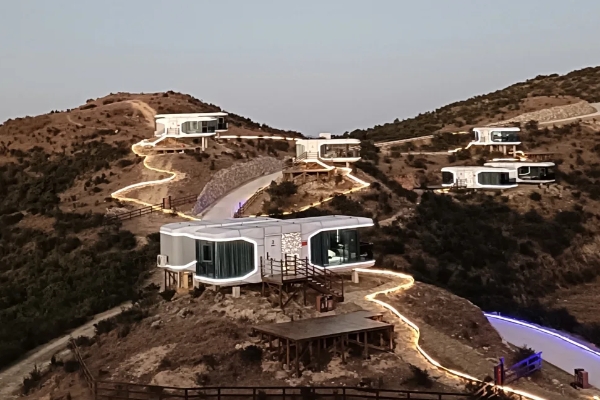The concept of the capsule house, which originated in the 1970s in Japan, was initially a response to the issue of limited space in densely populated urban areas. These compact living units quickly gained popularity for their efficient use of space and cost-effectiveness, providing essential living needs for their occupants.
Origins
In 1979, the first capsule hotel was designed by Japanese architect Kisho Kurokawa in Osaka. This innovative design was tailored to accommodate the temporary lodging needs of business travelers. With its unique design and space-saving layout, the capsule hotel offered guests a basic sleeping space complete with a bed, reading light, and music player. This concept soon gained popularity in Japan and gradually spread worldwide.
Evolution
Over time, the design of capsule houses has continuously evolved to meet a broader range of market demands. Designers have begun to explore how to create more comfortable and practical living environments within limited spaces. Modern capsule houses often feature improved soundproofing, better ventilation systems, and more user-friendly internal layouts.
Technological Innovations
Advancements in technology have also played a role in the development of capsule houses. The introduction of smart home systems has made the living experience in capsule houses more modern and convenient. For example, controlling lighting, temperature, and entertainment systems through smart devices has become a standard feature in many capsule houses.
Diversified Uses
Capsule houses are no longer limited to traditional accommodation purposes; they have been used in a variety of scenarios, including student dormitories, emergency shelters, vacation homes, and even offices. This versatility makes capsule houses a flexible and economical solution.
Sustainability
With an increasing awareness of the environment, the sustainable characteristics of capsule houses have received more attention. Many capsule houses are constructed using eco-friendly materials and are designed with energy efficiency and resource recycling in mind. These features make capsule houses a living choice that aligns with modern sustainable development principles.
Global Impact
The concept of capsule houses has transcended borders and taken root worldwide. From Europe to North America, from Asia to Australia, capsule houses have attracted global attention with their unique charm. They are not only seen as an innovative way to solve housing problems but also serve as a platform for showcasing local culture and architectural innovation.
Future Prospects
Looking to the future, capsule houses are expected to continue developing and innovating to adapt to the ever-changing living needs and technological advancements. As urbanization accelerates and living space becomes increasingly scarce, capsule houses, with their characteristics of efficiency, economy, and sustainability, have the potential to become an important urban living choice in the 21st century.



Comments (0)